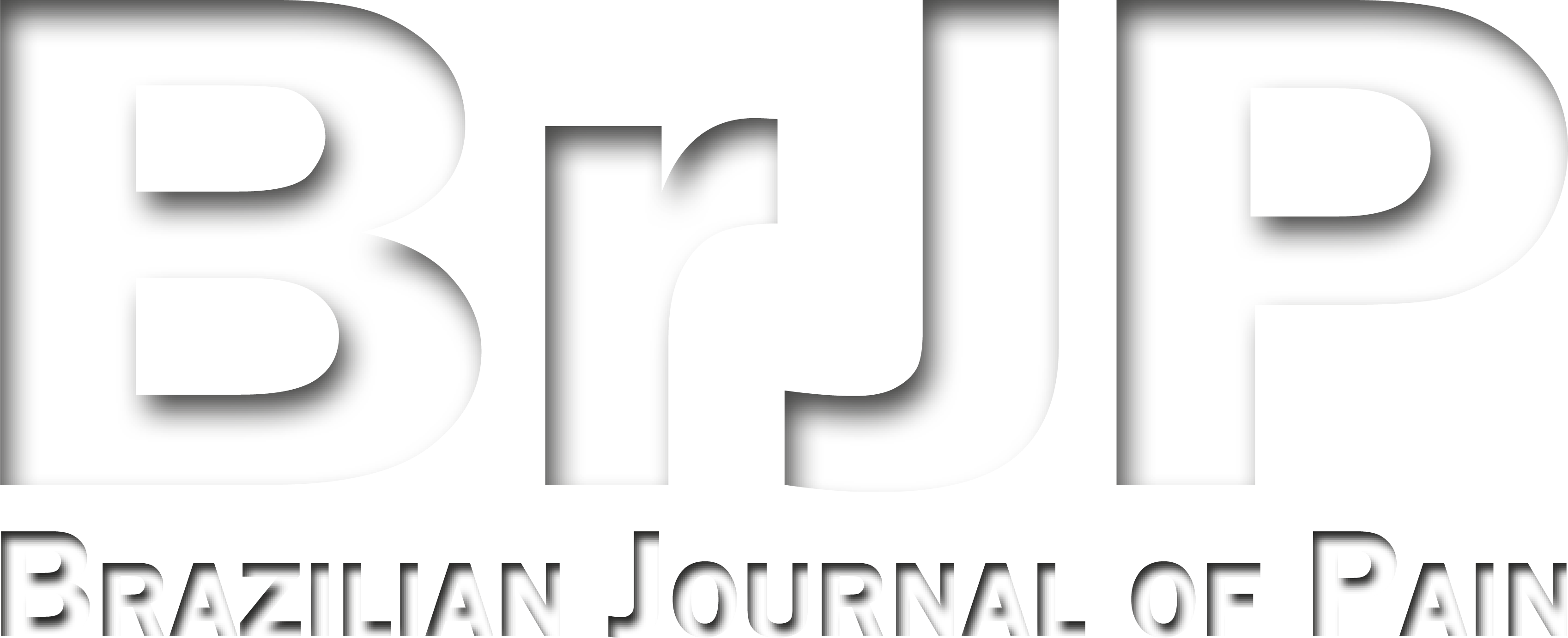Effect of mesenchymal stem cells on the regeneration of structures associated with temporomandibular joint: narrative review
Efeito de células-tronco mesenquimais na regeneração das estruturas associadas à articulação temporomandibular: revisão narrativa
Caren Serra Bavaresco; Thiago Kreutz Grossmann; Daniela Seitenfus Rehm; Eduardo Grossmann
Abstract
Keywords
Resumo
Palavras-chave
References
Okeson JP, de Leeuw R. Differential diagnosis of temporomandibular disorders and other orofacial pain disorders. Dent Clin North Am. 2011;55(1):105-20.
Ohrbach R, Dworkin SF. The evolution of TMD diagnosis: past, present, future. J Dent Res. 2016;95(10):1093-101.
Kellesarian SV, Al-Kheraif AA, Vohra F, Ghanem A, Malmstrom H, Romanos GE. Cytokine profile in the synovial fluid of patients with temporomandibular joint disorders: a systematic review. Cytokine. 2016;77:98-106.
Grossmann E. Algias Craniofaciais: Diagnóstico e Tratamento. 2019.
Willard VP, Kalpakci KN, Reimer AJ, Athanasiou KA. The regional contribution of glycosaminoglycans to temporomandibular joint disc compressive properties. J Biomech Eng. 2012;134(1):1-8.
Fazaeli S, Ghazanfari S, Everts V, Smit TH, Koolstra JH. The contribution of collagen fibers to the mechanical compressive properties of the temporomandibular joint disc. Osteoarthritis Cartilage. 2016;24(7):1292-301.
Mäenpää K, Ellä V, Mauno J, Kellomäki M, Suuronen R, Ylikomi T. Use of adipose stem cells and polylactide discs for tissue engineering of the temporomandibular joint disc. J R Soc Interface. 2010;7(42):177-88.
Colombo V, Palla S, Gallo LM. Temporomandibular joint loading patterns related to joint morphology: a theoretical study. Cells Tissues Organs. 2008;187(4):295-306.
Wang XD, Cui SJ, Liu Y, Luo Q, Du RJ, Kou XX. Deterioration of mechanical properties of discs in chronically inflamed TMJ. J Dent Res. 2014;93(11):1170-6.
Wang XD, Kou XX, Mao JJ, Gan YH, Zhou YH. Sustained inflammation induces degeneration of the temporomandibular joint. J Dent Res. 2012;91(5):499-505.
Farrar WB. Characteristics of the condylar path in internal derangements of the TMJ. J Prosthet Dent. 1978;39(3):319-23.
Saleh R, Reza HM. Short review on human umbilical cord lining epithelial cells and their potential clinical applications. Stem Cell Res Ther. 2017;8(1):222.
Huh Y, Ji RR, Chen G. Neuroinflammation, bone marrow stem cells, and chronic pain. Front Immunol. 2017;8:1014.
de Souza Tesch R, Takamori ER, Menezes K, Carias RBV, Dutra CLM, de Freitas Aguiar M. Temporomandibular joint regeneration: proposal of a novel treatment for condylar resorption after orthognathic surgery using transplantation of autologous nasal septum chondrocytes, and the first human case report. Stem Cell Res Ther. 2018;9(1):94.
Carboni A, Amodeo G, Perugini M, Arangio P, Orsini R, Scopelliti D. Temporomandibular disorders clinical and anatomical outcomes after fat-derived stem cells injection. J Craniofac Surg. 2019;30(3):793-7.
Ahtiainen K, Mauno J, Ellä V, Hagström J, Lindqvist C, Miettinen S. Autologous adipose stem cells and polylactide discs in the replacement of the rabbit temporomandibular joint disc. J R Soc Interface. 2013;10(85):20130287.
Ciocca L, Donati D, Ragazzini S, Dozza B, Rossi F, Fantini M. Mesenchymal stem cells and platelet gel improve bone deposition within CAD-CAM custom-made ceramic HA scaffolds for condyle substitution. Biomed Res Int. 2013;2013:549762.
Zhang M, Yang H, Lu L, Wan X, Zhang J, Zhang H. Matrix replenishing by BMSCs is beneficial for osteoarthritic temporomandibular joint cartilage. Osteoarthritis Cartilage. 2017;25(9):1551-62.
Zaki AA, Zaghloul M, Helal ME, Mansour NA, Grawish ME. Impact of autologous bone marrow-derived stem cells on degenerative changes of articulating surfaces associated with the arthritic temporomandibular joint: an experimental study in Rabbits. J Oral Maxillofac Surg. 2017;75(12):2529-39.
Nejadnik H, Hui JH, Feng Choong EP, Tai BC, Lee EH. Autologous bone marrow-derived mesenchymal stem cells versus autologous chondrocyte implantation: an observational cohort study. Am J Sports Med. 2010;38(6):1110-6.
Kanafi MM, Ramesh A, Gupta PK, Bhonde RR. Dental pulp stem cells immobilized in alginate microspheres for applications in bone tissue engineering. Int Endod J. 2014;47(7):687-97.
Salash JR, Hossameldin RH, Almarza AJ, Chou JC, McCain JP, Mercuri LG. Potential indications for tissue engineering in temporomandibular joint surgery. J Oral Maxillofac Surg. 2016;74(4):705-11.
Helgeland E, Shanbhag S, Pedersen TO, Mustafa K, Rosén A. Scaffold-based temporomandibular joint tissue regeneration in experimental animal models: a systematic review Tissue Eng Part. B Rev. 2018;24(4):300-16.
Zhang M, Yang H, Lu L, Wan X, Zhang J, Zhang H. Matrix replenishing by BMSCs is beneficial for osteoarthritic temporomandibular joint cartilage. Osteoarthritis Cartilage. 2017;25(9):1551-62.
Zhou Y, Wang T, Hamilton JL, Chen D. Wnt/?-catenin signaling in osteoarthritis and in other forms of arthritis. Curr Rheumatol Rep. 2017;19(9):53.
Chen G, Park CK, Xie RG, Ji RR. Intrathecal bone marrow stromal cells inhibit neuropathic pain via TGF-? secretion. J Clin Invest. 2015;125(8):3226-40.
Di Cesare Mannelli L, Tenci B, Micheli L, Vona A, Corti F, Zanardelli M. Adipose-derived stem cells decrease pain in a rat model of oxaliplatin-induced neuropathy: role of VEGF-A modulation. Neuropharmacology. 2018;131:166-75.
Submitted date:
04/12/2020
Accepted date:
06/01/2020


